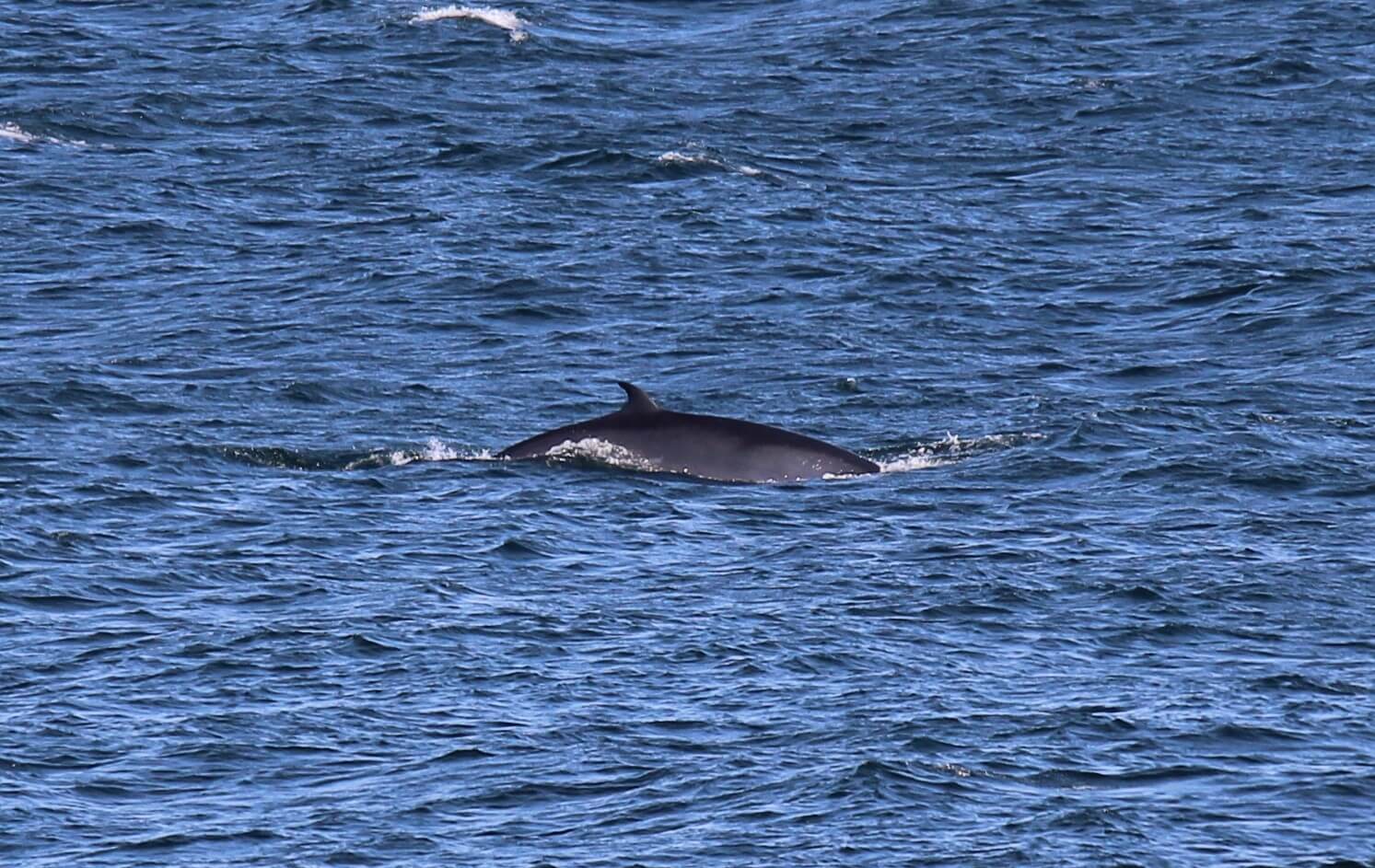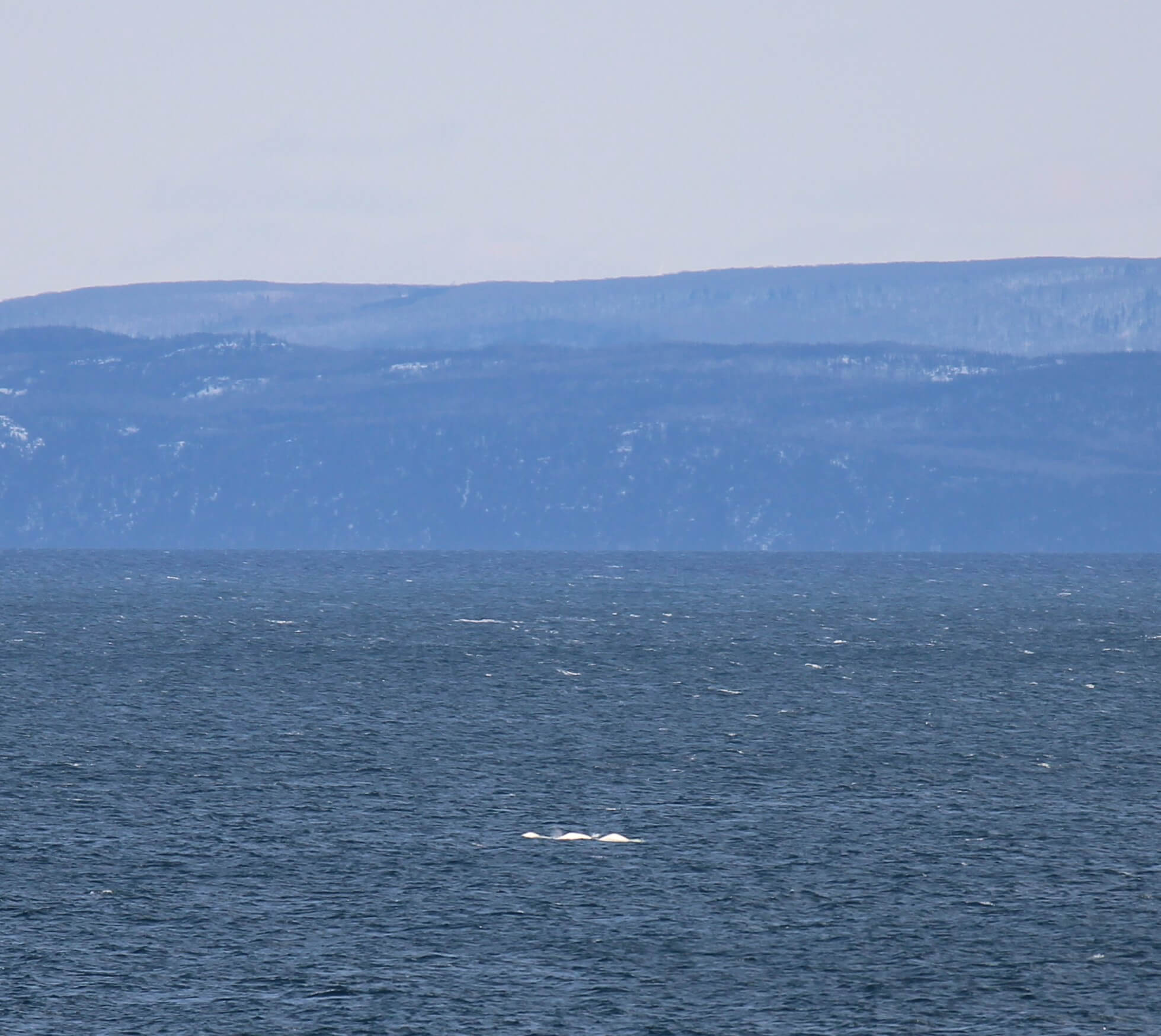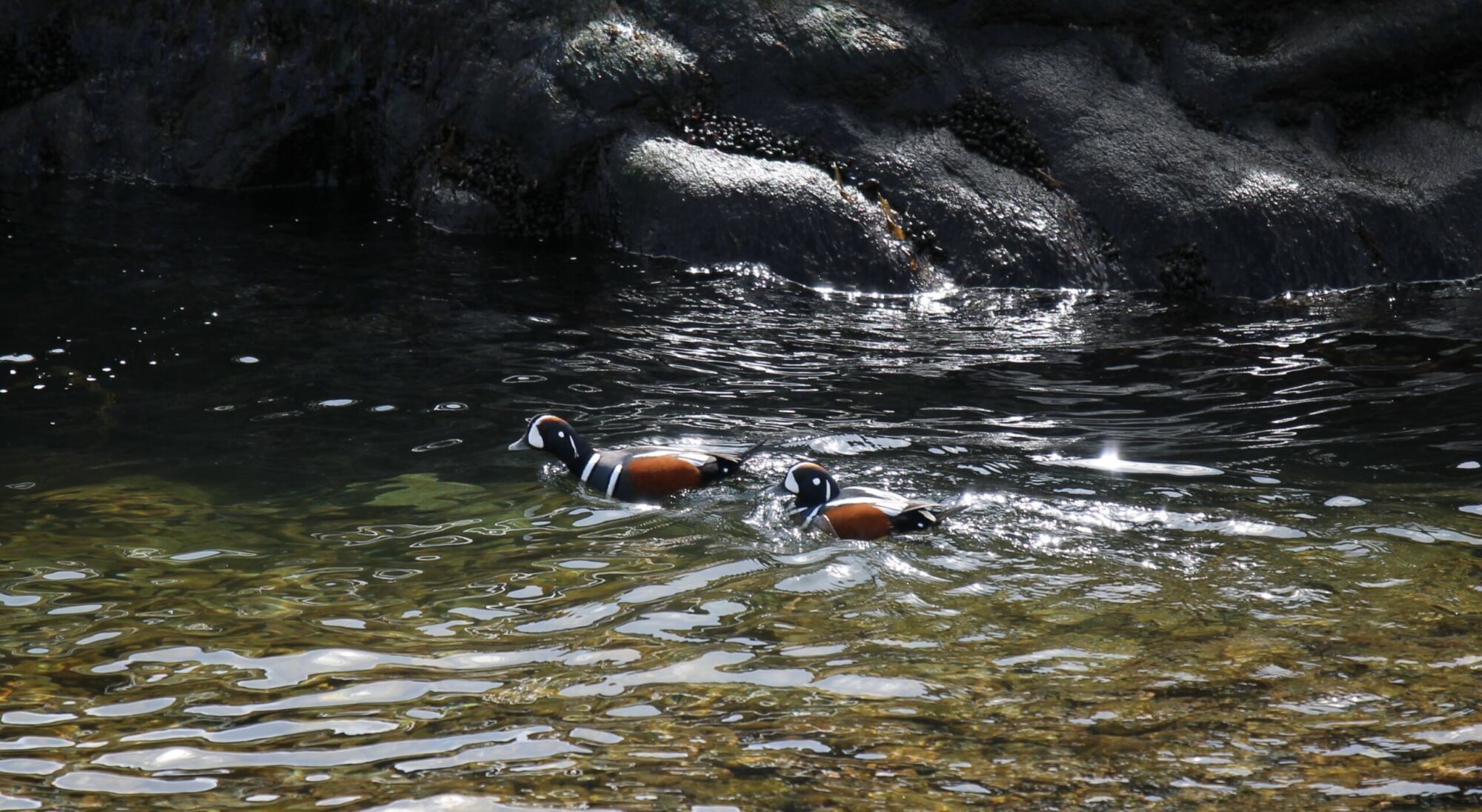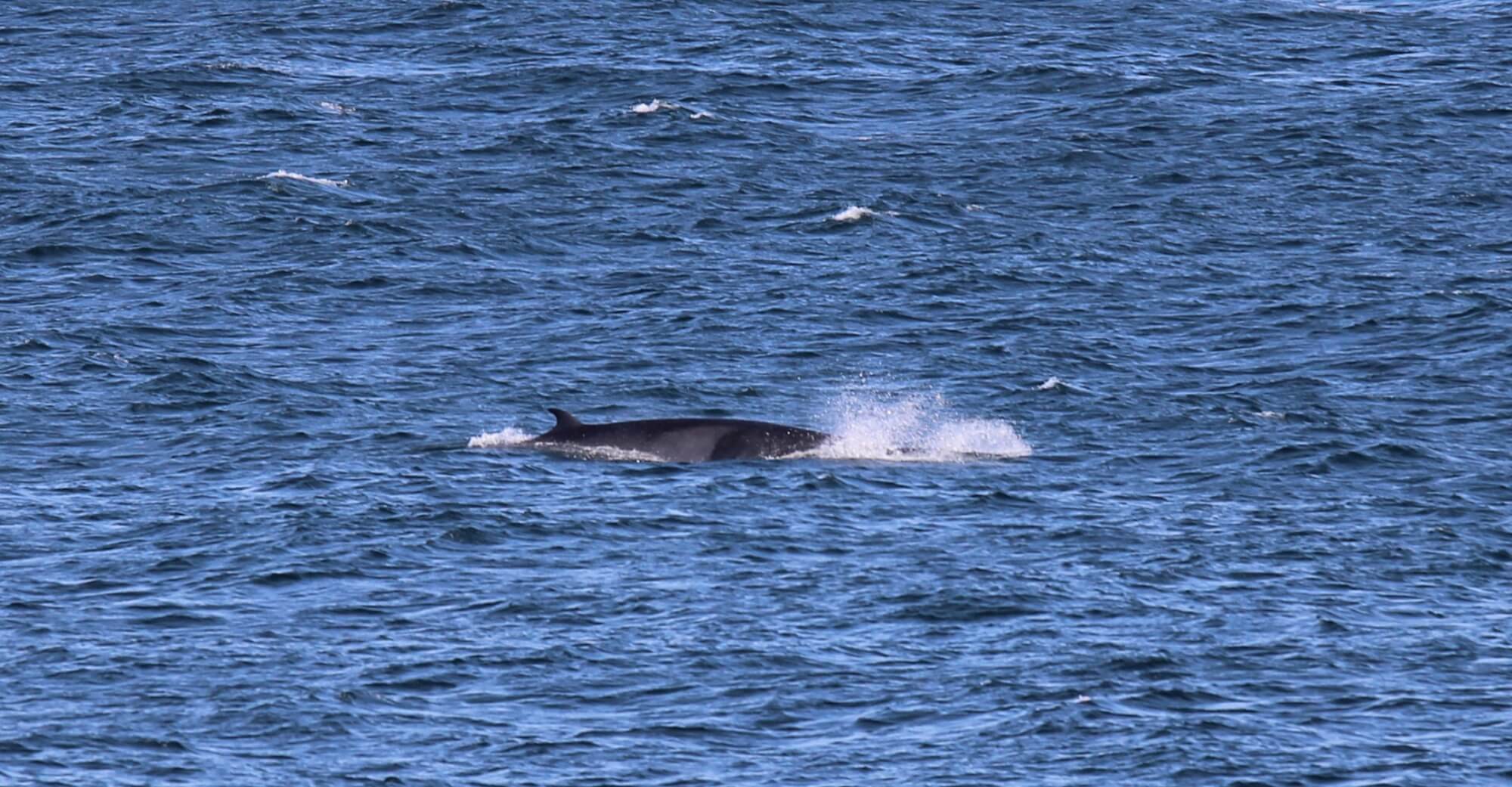The list of marine species present in the St. Lawrence is getting longer and longer: blue whales and fin whales in the gulf, groups of belugas near the coast, not to mention minke whales at several locations and seals that are just about everywhere!
Giants in the gulf
On April 13, there was quite a commotion in Port-Cartier when three blue whales and two fin whales were seen roaming between 3 and 8 nautical miles offshore. These giants of the seas do not easily pass under the radar, and even less so when several are present at the same place and at the same time! The blue whale is the largest animal on Earth, followed closely by the fin whale. Due to their size, both species have been decimated by the whaling industry and are still struggling to recover. Every observation of these difficult-to-study giants has the potential to teach us a little more about their behaviour. These two species of baleen whales communicate with each other using low-frequency sounds and can be observed alone or in short-lived groups.
A long weekend with plenty of sightings
In Les Escoumins, a naturalist is excited about the intriguing and dynamic observations she enjoyed over the weekend: “I saw a herd of belugas that was split into pairs or groups of three. At one point, they were quite active and formed a circle, creating the impression that they were on the hunt. There was a lot of splashing and they would often poke their heads out of the water before diving.” Belugas are gregarious animals that live in groups of anywhere between three and several dozen individuals. They communicate with each other with whistles, clicks and squeaks. Who knows what kind of cacophony there must have been under the surface at this moment?
This seasoned observer also had the chance to spot her first minke whales of the season: “One minke whale on Saturday morning, and two more on Sunday afternoon! The two whales were present at the same time, but about 20 metres apart, so they were not swimming together.” Unlike belugas, minke whales are rather solitary creatures. When two or more individuals are present at the same location, it is more often due to the presence of prey than it is to socialize.
She was also attentive to the birds in the area: “As for birds in general, there were a lot this weekend, especially eiders. There were also two drake harlequins that were harassing the eiders and goldeneyes.” Not only was the long weekend rich in observations, but it also ended with a nice dose of mild weather. “Thanks to the minke whales, it finally felt like spring,” she concludes.
The presence of minke whales was also noticed by other residents, who spotted an individual swimming off Cap de Bon-Désir in Les Bergeronnes. A little way upstream, in Tadoussac, marine fauna was also plentiful, with belugas swimming at the mouth of the Saguenay and harbour seals sighted from Pointe de l’Islet.
In Godbout, a first cetacean, a minke whale, showed the tip of its dorsal fin near the coast, much to the delight of local residents. On the other side of the river, at Cap-Chat, it is instead a more regular resident that made an appearance: a harbour seal. Whales of an undetermined species were also observed in Grande-Vallée.
With all these observations, we can definitely say that cetaceans are back!
Share your observations!
Have you observed marine mammals in the St. Lawrence River? Whether it’s an offshore puff or a few seals, write to us and send us your photos to [email protected]!








